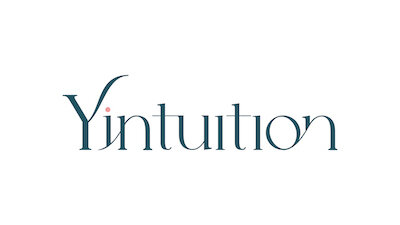Fertility Apps are only as helpful as the information they help you collect and organize.
One of the biggest issues with fertility apps is that they claim to be able to predict your fertile window, the 5 days before ovulation and the 24 hours after you ovulate (release an egg), when sex can result in pregnancy. This is problematic for 2 reasons:
If you rely on the app to tell you when you’re fertile, then you miss the opportunity to listen to your body and observe the changes in your body that occur in preparation for ovulation.
If you rely on the app and it is inaccurate you could be missing your fertile window completely.
Fertility app predictions are based on a typical 28 day cycle with ovulation occurring on cycle day 14. But according to a 2000 study*, only 30% of cycles have a fertile window between CD10-17. While the goal is to achieve a cycle that follows those typical guidelines, what we consider an “optimally fertile cycle,” you may not start there and could be missing out on months of conceiving just because you were having sex at a time when you couldn’t possibly get pregnant, i.e. outside of your fertile window and too far out of range from ovulation.
While the good apps do adjust the predicted window based on your cycles as you input more data, they still depend on your data. That’s why I like an app that offers lots of parameters for data entry. The more information your app has (and the more information you have), the better you both will be at predicting your fertile window, and using it accordingly.
When looking for a Fertility App to help you get pregnant, look for one that provides the following basic features:
Calendar display of your cycle
Chart display of your cycle
Graph display of your BBT
Predictor of fertile window (but remember this is only far from accurate and should only be used as a point of comparison with other data, such as your BBT, symptoms, and OPKs)
Here are the fertility metrics I like to see in a Fertility App:
Cervical fluid
BBT
Bleeding
Symptoms (cramping, mood swings, energy and libido, pain, etc)
Sex
OPK
These metrics or fertility data give you SO MUCH useful information in effectively predicting your fertile window and identifying any phases of your cycle that need attention to improve your chances of conceiving.
Cervical fluid is one of the most valuable data points you have because CF changes give you tangible indications that you are becoming more and more fertile. When you see cervical fluid change from lotion like to egg white you are getting close to ovulation. Be sure to note the changes and have sex any day you notice egg what cervical fluid.
BBT (basal body temperature) is another valuable piece of information. While it can’t tell you when you are about the ovulate, by charting month after month you’ll 1. get a good sense of your fertile window, and 2. be able to identify any potential problems in your cycle that may be preventing you from conceiving, such as lower temps over all or low temps in the luteal phase (after ovulation), a short follicular (before ovulation) or luteal phase, and much more!
Tracking bleeding can help us determine if there are any hormonal issues that are causes irregular bleeding, light or heavy bleeding during your period, etc, which once we know they exist we can start to remedy them and improve your chances of conceiving.
Tracking symptoms is an invitation to get to know your body and listen to what it is telling you. Ovulation is a major hormone shift and out bodies experience many important, though often subtle, changes in preparation for ovulation that can help you identify when ovulation is near. Keep an eye out for common fertile window symptoms such as:
heightened sense of smell or taste
increased energy and/or libido
cramping or twinge of pain
bloating
vulvar swelling or tenderness
mood changes
Ultimately there’s no way to get pregnant if you’re not having sex during your fertile window. Your app should have an easy way to track and view the days you have sex to be sure you’re "*doing it” when you’re most fertile.
Ovulation predictor kits can be another helpful tool to indicate when hormones like LH are on the rise in preparation for the release of an egg (aka ovulation). Being able to input this data will help you compare all of the ovulation predictor data and really hone in on your fertile window.
My favorite fertility apps for #TTC that meet all of these criteria include:
Kindara
Ovia
Natural Cycles
Fertility Friend
I also have to give a big shout out to Daysy which helped me conceive my 2 boys. Unlike most apps, because it is a thermometer, which tracks your BBT for you(!), it is incredibly accurate at predicting ovulation, with 99.2% accuracy. At nearly $300 it’s an investment but I personally think its worth it. Here’s why:
It tracks your temps for you! You don’t have to input the data into your phone. Just plug the thermometer in and it will load the data and generate a chart.
It can be used for TTC and pregnancy prevention so you can literally use it for a lifetime.
Whichever app you choose, please know that its best use is as data collection tool. Let it be the place where you enter all of the information that you observe. A place where you can keep track of your fertility parameters and monitor it in clear, constructive displays, i.e. charts, graphs. Use it to compare and crosscheck your data- BBT chart, symptoms, ovulation predictor kit- to confirm your fertile window. That way you can be sure you are having sex when you actually have a shot at getting pregnant, and you become so much more aware of and attuned to your body in the process.
References:
https://www.ncbi.nlm.nih.gov/pmc/articles/PMC27529/

